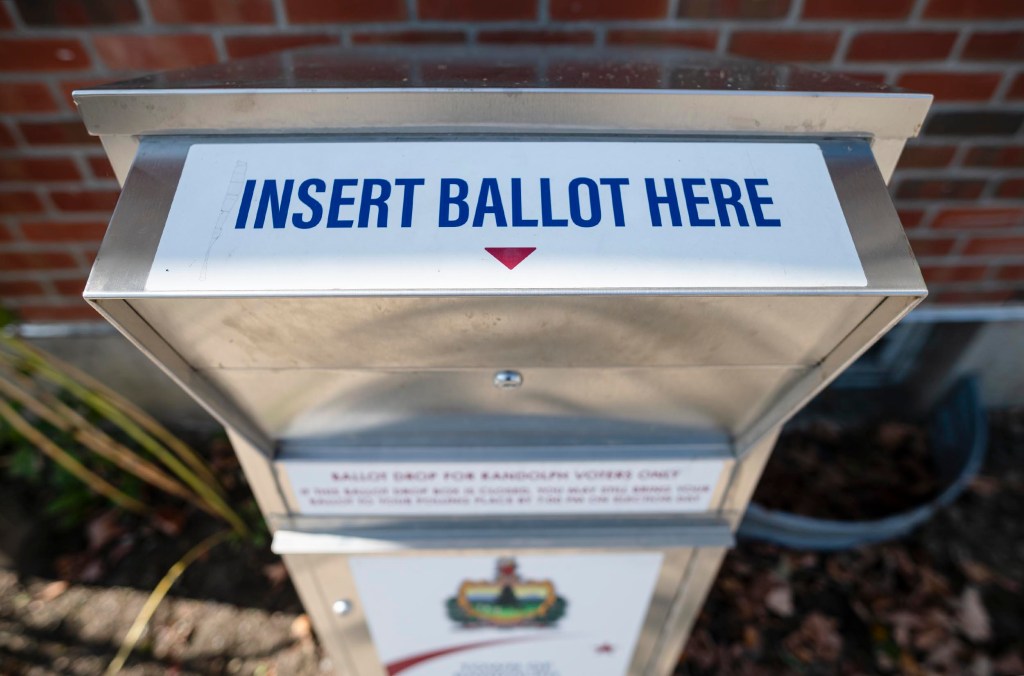

Final resolution of the race to represent the Bennington-1 House district now rests with the full Vermont House after a recount affirmed Democrat Jonathan Cooper’s narrow win over Republican Bruce Busa by just 23 votes.
Cooper originally led Busa by 25 votes on election night. Days later, on Nov. 8, Vermont Secretary of State Sarah Copeland Hanzas called for a revote, citing a newly discovered mistake with the voter checklist that arose during the redistricting process two years earlier.
Last week, 22 citizens spent their day in court counting and recounting 2,620 ballots cast on Election Day, as well as tabulating and checking maps and voter checklists for the House seat representing Readsboro, Searsburg, Stamford, Woodford and a part of Pownal.
“It’s nice to see that people did have the opportunity to engage directly with this process,” Cooper said. “They wanted to do so, and they wanted to show up for the process of a fair election.”
The recount committee — 11 volunteers suggested by Cooper and 11 suggested by Busa — tallied the same number of votes for Cooper but two additional votes for Busa. The recount affirmed Cooper’s narrow win, though by an even slimmer margin.
The recount was certified by the Bennington Superior Court a week later, on Nov. 25, but the checklist error remained unresolved. Data from the recount showed that 56 voters from the Bennington-1 district were incorrectly sent ballots from the neighboring Bennington-5 district. Meanwhile, 14 voters from the Bennington-5 district were incorrectly sent Bennington-1 ballots.
Busa said he first heard about the ballot issue from a voter who wanted to vote for him but did not see his name on his ballot. While “exhausted” by the process, Busa said he would contest the election now that the results have been certified because the recount vote margins are less than the 70 voters who did not have the opportunity to vote in their correct district race.
“I would really like for the people who didn’t get to vote for them to have their chance to vote,” said Busa.
Busa has followed the steps necessary to contest the outcome. He filed a request with the Secretary of State’s Office, which was referred to the Attorney General’s Office for investigation. That office will prepare a report for the full House in January, according to Seán Sheehan, director of elections and campaign finance for the Secretary of State’s Office.
The process became precedent in a 1983 case known as Kennedy v. Chittenden, in which a recount affirmed House candidate Robert Chittenden’s victory by a slim margin but the election was contested due to errors in the voter checklist. The Vermont Superior Court concluded that it did not have constitutional authority to rule on a contested election and said that jurisdiction lies with the House.
The case has been invoked several times since, including most recently in 2017 with the disputed and narrow election of Republican Bob Frenier over Progressive Susan Hatch Davis for an Orange-1 House district seat.
When the House reconvenes in January, new members will be tasked with taking action on the contestation of the Bennington-1 district seat. Sheehan said the House has “wide discretion and the constitutional authority” to reach a conclusion that could range from ordering a revote to reaffirming Cooper’s win.
In the case of Kennedy v. Chittenden, the House referred the case to the then-Committee on Municipal Corporations and Elections, which reaffirmed Chittenden’s victory. In 2017 the House adopted H.R.8 to create a special recount panel and H.R.10 to establish recount procedures that led to Frenier’s win being reaffirmed.
Sarah Buxton — Cooper’s lawyer and a former member of the Vermont House who went through a similar process in 2011 in her race for the Windsor-Orange-1 district seat — said the voter checklists were finalized and posted before Election Day. Therefore, she said it is unlikely the House would order a revote. Instead, Buxton said, the House would likely choose to uphold the results of the election or not.
“There necessarily needs to be finality in votes and in voting in order for government to function. There are time periods that actions need to happen within so that the functioning of government can continue,” said Buxton. “There will be a lot of things that the House will have to wrestle with and think about. I wouldn’t expect that they would have a lot of options.”
Busa said learning about election law has been interesting, and he said he knows the resolution will likely be more complex than simply ordering a revote.
“Now, we have ballots of people who voted that shouldn’t have voted in this district, and we have no idea who they voted for,” said Busa. “That throws a whole curve ball into the other easy fix of just letting the people vote.”
The time between Election Day and news of the recount certification has been a “wild ride,” Cooper said, adding that he is preparing to begin his tenure as a representative while knowing there is “more to come.”
“There’s just a lot of work to do between then and now, both in getting to know the people that I will be working with on Jan. 8, and to get to know the people that came out to the polls on Nov. 5,” he said.
Conor Kennedy, chief of staff to House Speaker Jill Krowinski, D-Burlington, said the voter checklist error is no reflection on the integrity and safety of Vermont’s elections.
“It’s really important to note that this was a technical piece, and that there was no one really at fault here,” said Kennedy. “While it is not ordinary, it’s not the first time, and there is a process, and that process is happening now.”
Read the story on VTDigger here: Procedural errors send Bennington County House race to the full chamber for judgment.

